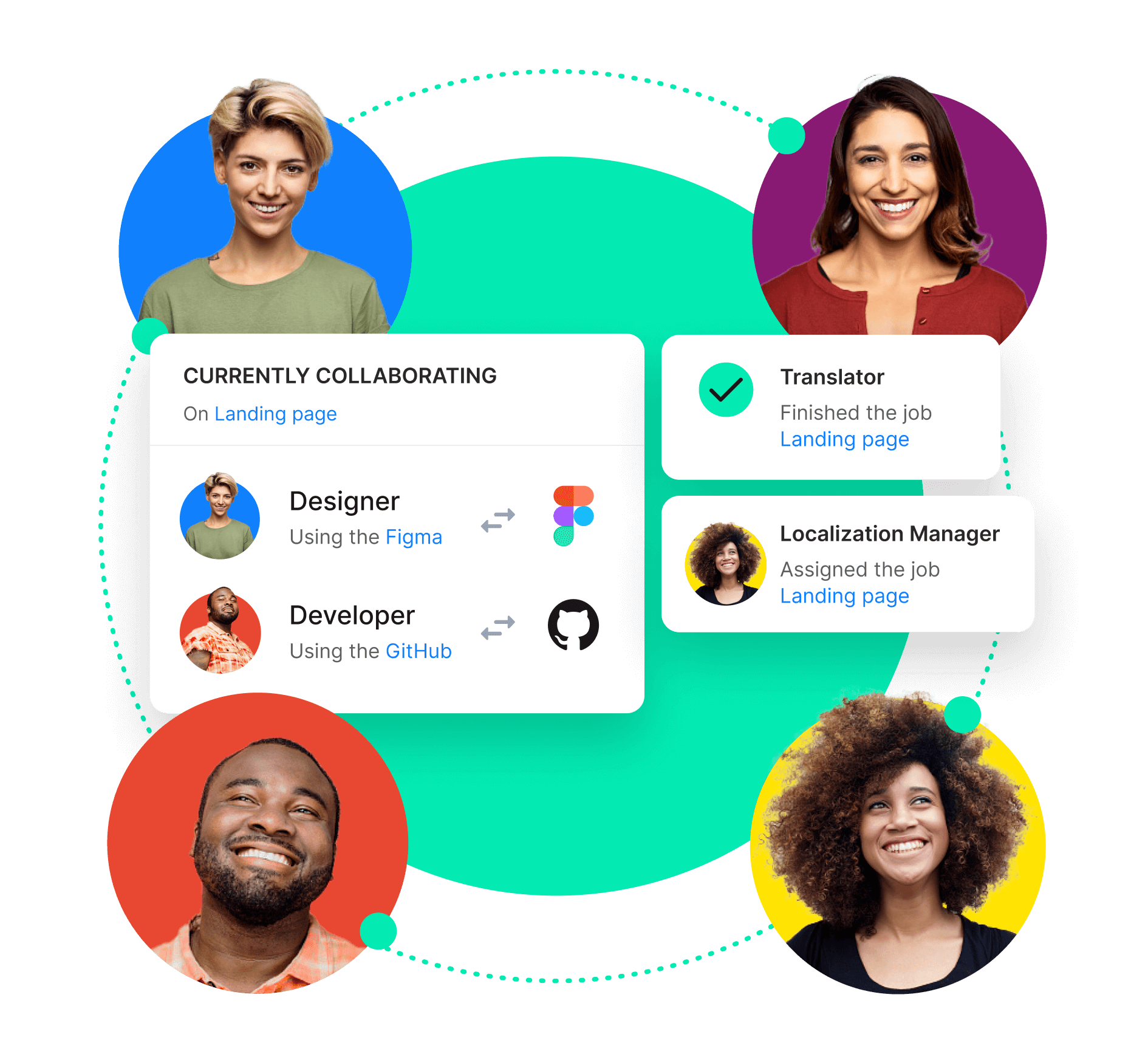Localization strategy
Evaluating and Choosing Localization Tools: 10 Must-Haves to Consider

When it comes to localization, the global market is abundant with solutions that promise to make your life easier. Among the benefits of using modern software for managing localization projects are increased translation quality and reduced costs. You’ll also be able to track your team’s progress as each project unfolds.
Whether you’re localizing a web page or mobile app, a website or voice service, or another kind of content, the localization technology you use can have a tremendous impact on your bottom line. That’s what makes it so important to choose one that’s easy to use and has well-thought-out features in place.
Here are 10 must-haves for localization solutions and what makes each one essential to a successful localization workflow.

Unlock global business with the Phrase Localization Platform
Expand into new markets with all the tools you need in one technology suite for high-quality, fast, and scalable localization.
Your localization tool should be cloud-based
Cloud-based localization solutions allow users to access files and information from any device at any time. This comes in handy when working with teams whose members are located in multiple time zones, as it facilitates collaboration. Keeping projects in the cloud eliminates the need for team members to constantly email files back and forth, saving everyone time and effort.
Depending on the specifics of your localization work, a cloud-based solution can likely offer you many other benefits, too. For example, if your business works with multiple translators for a single language, a cloud-based solution can help them work more comfortably and efficiently, such as by showing one translator how another previously translated a particular word or phrase.
In contrast, when translators work individually, it’s hard for them to benefit from each other’s work, potentially leading to consistency issues.
Your localization tool should be flexible
Flexible software for localization lets you choose localization services and providers, manage users, and decide who can access your data. You should be able to localize all of your content—from marketing emails to knowledge base articles—on a single localization platform.
Choose a localization tool that gives you and your users freedom. An inflexible solution might make it difficult to add and remove users as you move from one localization project to another. No matter which tool you choose, you’ll also be limited to working with formats and software that are compatible with that particular localization solution.
When looking for a localization solution, be wary of any technical limitations that could hold you back. For instance, if you work on projects involving large volumes of text that need translation into many languages, you could run into major problems if a project becomes too large for your localization software to handle.
Your localization tool should allow automation
Automating localization is a valuable asset in taking a software product global. It can save you time and energy by freeing you from the need to manually perform repetitive tasks, such as importing and exporting translatable content. New features are frequently accompanied by new user interface text that must be translated, and automation can spare you the trouble of manually getting the text in and out of your localization solution.
Some localization solutions also support integration with other products via application programming interfaces (APIs). You can take advantage of these features to automate even more of your localization workflow—how about sending an automated notification to a team member on Slack when a project needs their attention?
Your localization tool should offer solid translation memory support
Translation memory support is an essential feature for all localization software. Translation memories store translations for reference and reuse when similar text must be translated at a later time. This way, you can “recycle” existing work in another localization project. As your translation memories grow, they boost your team’s productivity and improve turnaround times.
Without translation memories, your translators can’t easily access relevant past translations as they work. This might lead translators to repeatedly research translations for the same words and phrases, slowing them down and making translation needlessly difficult. It can also lead to consistency issues, since translators may choose different translations for the same phrase at different points in time.
Translation memories truly shine when identical or near-identical text appears in many different places. For example, names and descriptions of product features might appear in user guides, support pages, and promotional emails.
“A professional translation memory solution that fits your business and your processes is a must,” says Daniela Rodriguez Bonelli, who oversees translations for Woom, a manufacturer of children’s bikes based in Austria.
The more you translate the same or similar text, the more time and money your company will save. Add several languages into the mix, and the savings increase even more.
Your localization tool should make searching easy
Particularly when dealing with large projects with hundreds of thousands of words needing translation, a good search feature can save you and your team a lot of potential headaches. If translators need context or additional information from a previous project (or from elsewhere within a current project), they’ll be lost without a search function that lets them find what they’re looking for quickly and easily.
The existence of a search function alone does not imply that the function is actually helpful, either. Some solutions offer only rudimentary functionality that limits the kinds of searches users can perform, and others return mountains of irrelevant results that users must carefully sift through to find what they want.
In contrast, a localization platform with a well-designed search feature lets users find the information they need in seconds, without the pressure of sorting through pages of results and the stress of not knowing whether any of the results are even relevant.
Your localization tool needs a user-friendly interface
Localization teams bring together people from diverse environments, with different educational and cultural backgrounds. Some may be quick learners, while others might struggle to grasp new technologies—and a cluttered, unintuitive interface will slow down even the most computer-savvy translator. If your localization software forces users to binge-read its documentation or experiment for hours in order to discover how to perform basic tasks, it’ll quickly become a time waster, not a time saver.
If you truly want to improve the efficiency of your localization process, the localization platform you choose should be intuitive and easy to use for your whole team, regardless of technical ability. This way, you can speed up workflows, avoid issues caused by user errors, and spare yourself the trouble of going through every menu ten times (just in case you missed that one option you’re looking for).
Your localization tool should come with good documentation and support
Just like any other kind of software, users might need assistance when working with a localization solution. When software issues arise, good documentation and a helpful support team can be the difference between meeting a deadline and missing it.
Documentation is the first line of defense: Often, users can assist themselves if the software offers built-in help or a step-by-step guide that clearly explains how to accomplish a task or resolve an issue. When users can’t handle a problem on their own, a great support team will work with them to resolve it quickly and minimize the disruption it caused.
Localization software vendors may also offer their customers educational resources like articles, video tutorials, live webinars, and even one-on-one training. Users can refer to or request these resources if they’d like help learning to use the software; that, in turn, helps your company get the best return on its investment in the software.
Your localization tool should facilitate teamwork
When your entire team can work in one place, there are fewer opportunities to commit errors and fewer chances for errors to go unnoticed. A centralized, collaborative approach to localization also minimizes the risk of losing files or accidentally working on an outdated version of a file.
Beyond providing a centralized working environment, a good localization platform will also actively encourage collaborative teamwork. For example, translators can add comments to a file to request input from each other or draw attention to problems with the text to be translated. Managers can use the platform to identify issues that are holding up progress and work with the team members involved to resolve them.
Your localization tool should be customizable
The ability to customize and extend a localization solution to suit your particular working environment and needs can streamline your workflow from beginning to end. One common reason for doing this is to add support for files formatted in a particular way—software developers, for example, might need to “teach” a localization tool to recognize translatable text in user interface files.
Another important way to extend a localization solution is by integrating it with other tools in your workflow. You can do this to take advantage of automation features, as mentioned earlier, but that’s not the only way to use integrations.
For example, if your website runs on a content management system like WordPress, you should be able to connect it to your localization tool out of the box with a WordPress translation plugin. This will automatically import source content from your site and export translations back to it. Similarly, if you use software like Sketch for UI design, you can allow designers to access localized text within Sketch, helping them address issues like text overflowing out of its container (barf!) before they can make it into the finished product.
“When choosing a TMS, it’s key to think about the different software platforms other departments use in your company,” explains Daniele Giulianelli, Translation Technology Project Leader at Comparis, an online comparison service for health insurance, real estate, and financial products in Switzerland.
Which content management system does the marketing team employ? What’s the UX design team’s main design tool? Considering questions like these can give you an idea of what to look for when comparing the integrations offered by different localization solutions. Take your time, test several solutions, and talk to their support or sales teams to make an informed decision.
Your localization tool should scale with your needs
As you grow, your localization platform should be able to grow with you. Localization software is commonly made available under a subscription model, potentially including different pricing tiers based on usage. Such a tiered pricing model may be appropriate for a business with relatively stable localization needs, but it can stifle a content-heavy business as it expands into new markets and must translate larger volumes of text into more languages.
In contrast, some solutions take a more scale-friendly approach to pricing, with rates that don’t change based on the volume of text translated and the number of target languages. For businesses that expect their localization needs to grow over time and are looking to scale up localization efficiently, this type of model offers greater predictability and freedom to expand.
Localization tool are indispensable resources for international growth
Localization solutions make translation an efficient process, allowing globally distributed teams to collaborate and communicate in real time, regardless of each team member’s geographical position.
Your localization solution needs to be easy to automate and integrate with your existing environment—and above all, you need a solution that creates solutions, not headaches.
A flexible, cloud-based solution for localization, featuring an intuitive interface, robust automation capabilities, and a supportive team that’s there for you when needed, is truly worth its weight in gold.
Speak with an expert
Want to learn how our solutions can help you unlock global opportunity? We’d be happy to show you around the Phrase Localization Platform and answer any questions you may have.





